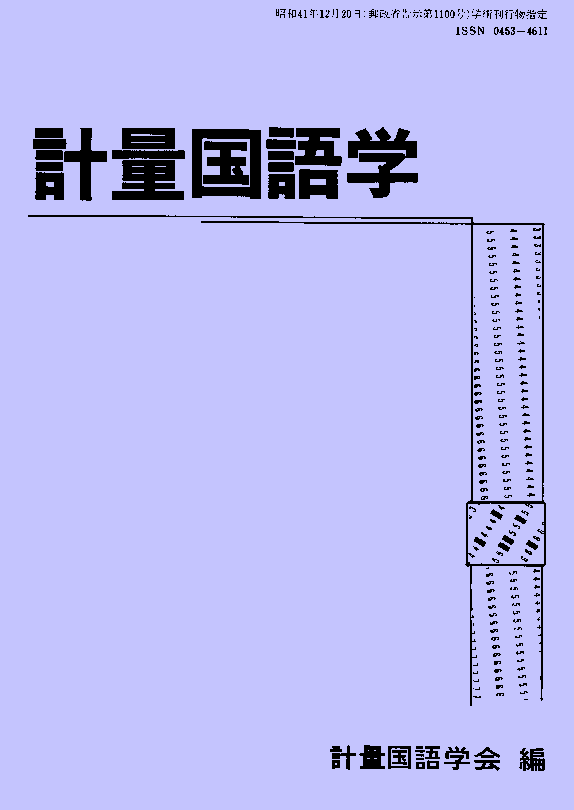All issues

Volume 29, Issue 1
Displaying 1-2 of 2 articles from this issue
- |<
- <
- 1
- >
- >|
Note
-
Masamitsu ItoArticle type: Note
2013Volume 29Issue 1 Pages 1-33
Published: June 25, 2013
Released on J-STAGE: May 01, 2024
JOURNAL OPEN ACCESSThis paper introduces a 3-gram list for automatic experimentation with Japanese pop song writing. The songs are derived from a randomgeneration of third-order word approximation based on C.E. Shannon's information theory. The words in the list come from 73 Japanese popular songs written by Matsutoya Yumi. Using this list, it is possible to make Japanese popular songs automatically.View full abstractDownload PDF (45358K) -
“-chikku” and “-tikku”Tsunao OginoArticle type: Note
2013Volume 29Issue 1 Pages 34-39
Published: June 25, 2013
Released on J-STAGE: May 01, 2024
JOURNAL OPEN ACCESSWe can find a lot of fluctuation of wordforms in Japanese language. One of such examples is “-chikku” and “-tikku” which stand for “-tic” in English. Using search engine for WWW, we can get hit counts, which is resumed to be numbers of frequencies of each wordform. The results showed that the fluctuation was caused by three different steps of inflow. The first step was done in an old period when Japanese accepted “-tic” as “-chikku”. The second step was done in a new period when Japanese accepted “-tic” as “-tikku”. And the third step was done in recent years when Japanese suffix “-chikku” was established and used to some words without English origins.View full abstractDownload PDF (847K)
- |<
- <
- 1
- >
- >|